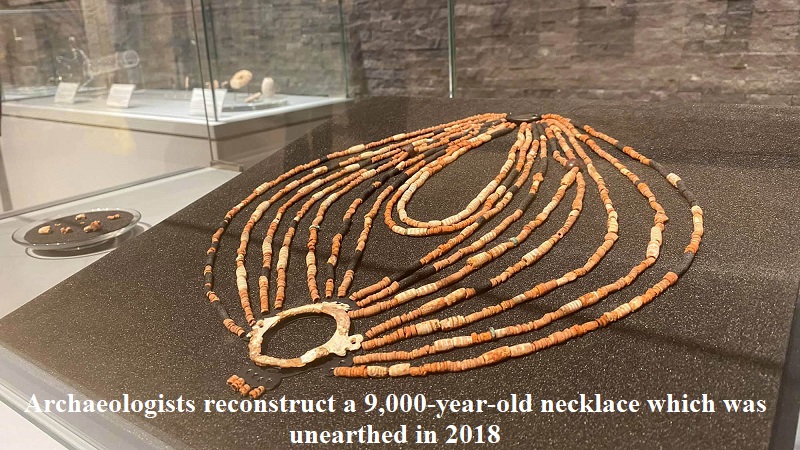
Archaeologists have reconstructed a 9,000-year-old necklace that was discovered in 2018 alongside the grave of a child at the ancient settlement of Ba’ja in the Middle East, located in what is now Jordan.
The well-constructed cist-type grave was found in the Neolithic village of Ba’ja, dating back to 7,400–6,800 BCE.
The child, estimated to be around eight years old, was buried in a fetal position, surrounded by multiple layers of grave materials, and adorned with over 2,500 beads that covered the chest and neck.
An international team of archaeologists, led by Hala Alarashi from Côte d’Azur University in France, concluded that the shape of the child’s jaw indicated that she was likely a girl.
Among the concentration of beads, the researchers also discovered a double perforated stone pendant and an engraved mother-of-pearl ring.
In a study titled “Threads of memory: Reviving the ornament of a dead child at the Neolithic village of Ba`ja (Jordan),” published in the online journal PLOS One on August 2, the experts detailed the process of reconstructing the artifact.
The outcome of the reconstruction exceeded expectations, revealing an impressive multi-row necklace with a complex structure and attractive design.
While parts of the beads were made from exotic shells and stones, including fossil amber, the researchers suggest that the necklace itself was created at Ba’ja, indicating the child’s significant social status.
The abundance of beads in the necklace, a common trait in ornaments found in other burials at Ba’ja, suggests wealth and prosperity.
The large number of beads—over 2,500—is unprecedented among contemporary Neolithic villages in the Levant.
The ornament not only served symbolic functions related to identity but also played a crucial role in the inhumation rituals, acting as a centerpiece during public events that gathered families, relatives, and people from other villages.
The discovery of this ornament from the child’s life highlights the remarkable social status of the individual and provides valuable insights into the cultural practices and customs of the ancient settlement at Ba’ja.

Post Your Comments